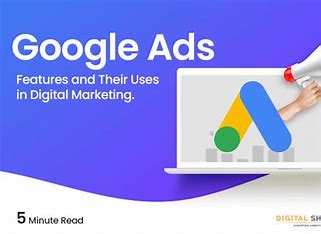
The Ultimate Guide to Google Ads Marketing: Unlocking Business Success
Created on 3 December, 2024 • Technolgy • 53 views • 2 minutes read
In today's competitive digital landscape, having an effective online advertising strategy is crucial for businesses. Google Ads, one of the most powerful advertising platforms, enables you to reach millions of potential customers.
What is Google Ads?
Google Ads is an online advertising platform that allows businesses to display their ads on Google’s search engine results pages (SERPs), YouTube, and other partner websites. With Google Ads, you only pay when users take action, such as clicking on your ad or viewing your video, making it a cost-effective marketing tool.
Why Choose Google Ads for Marketing?
- Massive Reach: Google processes over 8 billion searches daily, giving you access to a vast audience.
- Targeted Advertising: Tailor ads based on location, demographics, interests, and search intent.
- Cost-Effective: Pay-per-click (PPC) model ensures you pay only for results.
- Measurable ROI: Track campaign performance with precise metrics like clicks, impressions, and conversions.
- Versatile Ad Formats: Choose from search ads, display ads, shopping ads, and more to suit your goals.
Types of Google Ads
- Search Ads: Text-based ads that appear on Google’s SERPs. Ideal for businesses targeting high-intent keywords.
- Display Ads: Visual banner ads that appear on websites within the Google Display Network. Perfect for brand awareness.
- Shopping Ads: Product-based ads that include images, prices, and descriptions, perfect for eCommerce businesses.
- Video Ads: Ads that play on YouTube, great for storytelling and audience engagement.
- App Campaigns: Promote your mobile app across Google’s platforms.
How to Create a Successful Google Ads Campaign
Step 1: Define Your Goals
- Decide whether you want to increase website traffic, generate leads, boost sales, or promote brand awareness.
Step 2: Choose the Right Campaign Type
- Select a campaign type that aligns with your goals, such as search, display, or shopping.
Step 3: Keyword Research
- Use tools like Google Keyword Planner to find high-volume, low-competition keywords relevant to your business.
Step 4: Create Engaging Ad Copy
- Write concise, compelling headlines and descriptions that include your target keywords.
- Include a clear call-to-action (CTA) like “Shop Now” or “Learn More.”
Step 5: Set a Budget
- Determine your daily budget and bidding strategy (e.g., cost-per-click or cost-per-acquisition).
Step 6: Monitor and Optimize
- Use Google Ads Manager to track performance.
- Adjust keywords, ad copy, and targeting settings based on data insights.
Tips for Maximizing Google Ads ROI
- Target Long-Tail Keywords: These have less competition and higher intent, increasing conversion rates.
- Use Ad Extensions: Add site links, call buttons, or location information to enhance your ads.
- Leverage Negative Keywords: Exclude irrelevant searches to avoid wasting your budget.
- A/B Test Your Ads: Experiment with different headlines, descriptions, and CTAs to find what works best.
- Track Conversions: Set up conversion tracking to measure the effectiveness of your campaigns.
Common Mistakes to Avoid in Google Ads
- Ignoring Mobile Optimization: Ensure your ads and landing pages are mobile-friendly.
- Overlooking Quality Score: Low-quality scores increase costs and reduce ad visibility.
- Broad Targeting: Refine your audience to avoid spending money on uninterested users.
- Neglecting Analytics: Regularly analyze metrics like click-through rates (CTR) and conversion rates for improvement.
Google Ads Success Stories
- Amazon: The eCommerce giant leverages Google Ads to dominate search results for product-related keywords.
- Zappos: Increased ROI by using tailored ad campaigns targeting specific demographics and interests.
- Small Businesses: Local businesses boost foot traffic by targeting nearby customers with location-based ads.
How to Get Started with Google Ads
- Create an account on Google Ads.
- Define your goals and budget.
- Design a campaign tailored to your audience.
- Monitor, tweak, and optimize for ongoing success.
Final Thoughts
Google Ads is a game-changer for businesses looking to grow online. By following best practices, avoiding common mistakes, and continuously optimizing your campaigns, you can maximize your ROI and achieve your marketing goals.
Ready to launch your first Google Ads campaign? Take the leap and watch your business thrive!
Popular posts
-
Coin Master free spins & coins daily links January 2023Games • 3,034 views
-
AI in Healthcare: Advancements and ChallengesTechnolgy • 1,806 views
-
7 Simple Steps to Rank Number 1 in Google SearchTechnolgy • 1,472 views
-
E-commerce EvolutionTechnolgy • 1,171 views
-